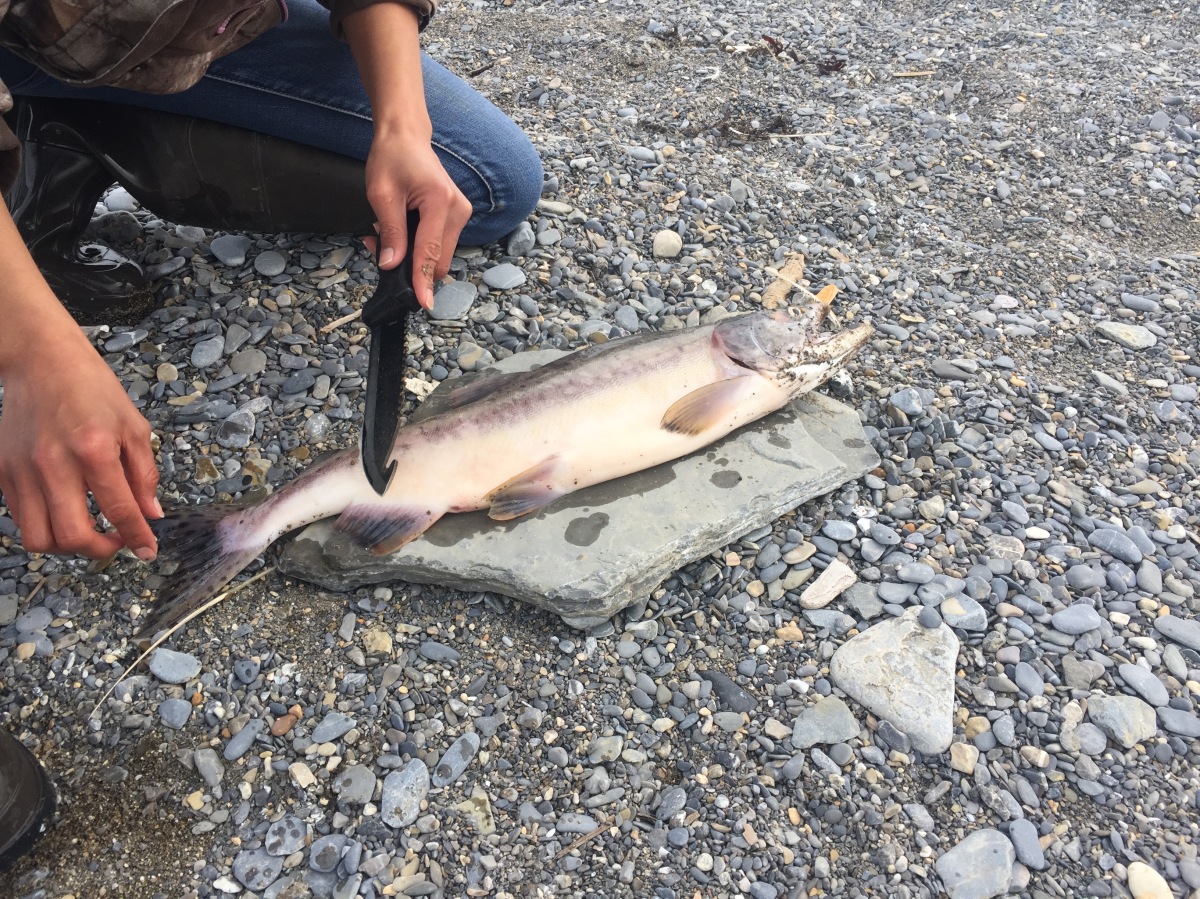While scheduled to arrive in Teller on Wednesday, we didn’t make it over from Brevig Mission until midday Thursday due to poor flying (and boating) conditions. It was an even smaller bush plane this time, and I was convinced that not all out luggage would fit. I watched as the pilot and Bering Air agent stuffed luggage in both of the wings and even in the nose of the tiny plane. And because there were so many passengers, I got to sit in the copilot seat for the short 10-minute plane ride.
Teller is a village with a population of approximately 230 people. It lies just across Port Clarence from Brevig Mission, and in the winter, people easily ride across the ice back and forth from the villages. Teller is also connected to Nome by road, and it is a “damp” village, meaning that alcohol is allowed in town but cannot be sold. The biggest difference is that Teller has no running water. People take showers at the village laundromat and haul buckets of water home for cooking, dish washing, etc. There are no flushing toilets in homes, so honey-buckets are the norm here.
The afternoon clinic went efficiently with back to back sports physicals, and I went out with some friends right after work for another round of berry picking! We drove out of town to hunt for salmonberries and saw a seal flopping near shore and a herd of musk ox on a distant hill along the way. I was so excited when we found some blueberries that were ready to pick as well. We then drove to the side of a hill, to an area called the “coal mine”, and picked blueberries for close to an hour.
The next day, I made a short trip to check out the village store. While better stocked than the store in Brevig, the prices and lean selection of goods (and complete lack of fresh food) still shocked me. Then, another busy clinic day ended with news that the incoming storm had closed the Nome-Teller road due to a washout and evening flights were cancelled. Graciously, I got an invitation to go to a health aide’s house for a spaghetti dinner, Native Alaskan food, and homemade maple-glazed donuts.
The Native Alaskan food was actually pretty decent, and not as scary as people had been making it sound. Most of the food was in a plastic bucket of rendered seal oil, and I tried a little sample plate of dried fish, seal meat (both dried and half cooked/dried), seal intestine, seal blubber, and carrots/imitation crab/pilot bread crackers soaked in seal oil. I learned that seal oil is used on basically everything here, as a dressing, sauce, dip, etc. and it didn’t taste as fishy as I thought it would. Honestly, most of the food had a jerky-like texture and a somewhat mild taste. My favorite thing I tried was probably the seal meat, and my least favorite was definitely the blubber. The maple-glazed donuts were an amazing palate cleanser after the meal!
Alas, bad weather has us stranded in Teller today (Saturday), and we are keeping our fingers crossed for better weather tomorrow morning so we can finally get to Nome and head out for Diomede on Monday.
Next up: Unsure…it really depends on the weather.


















































































































